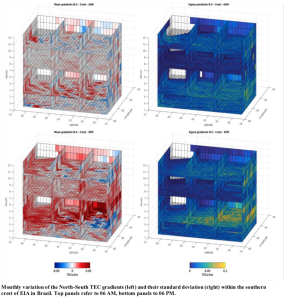Characterization of the Ionospheric environment at low latitudes, application to Biomass external calibration sites

The Biomass satellite is a polarimetric P-band (435 MHz) synthetic aperture radar (SAR) in a dawn-dusk low-Earth orbit. Its principal objective is to measure biomass content and biomass change in all of Earth’s forests. The mission launch is envisaged around 2024, for a duration of five years.
The ionosphere introduces Faraday rotation and scintillations on every pulse emitted by low-frequency SAR, impacting the quality of the imaging. Some of these effects are due to Total Electron Content (TEC) and its gradients along the propagation path. To support the operation of biomass, an accurate assessment of the ionosphere morphology and dynamics is necessary, especially in the equatorial and tropical regions. With this in mind, this activity conducted an in-depth investigation of the significant noise budget introduced by the southern crest and the trough of the Equatorial Ionospheric Anomaly (EIA) over Brazil. The work performed was characterised by a novel approach to conceiving an SAR-oriented ionospheric assessment, aimed at detecting and identifying spatial and temporal TEC gradients, including scintillation effects, by means of GNSS ground-based monitoring stations.
